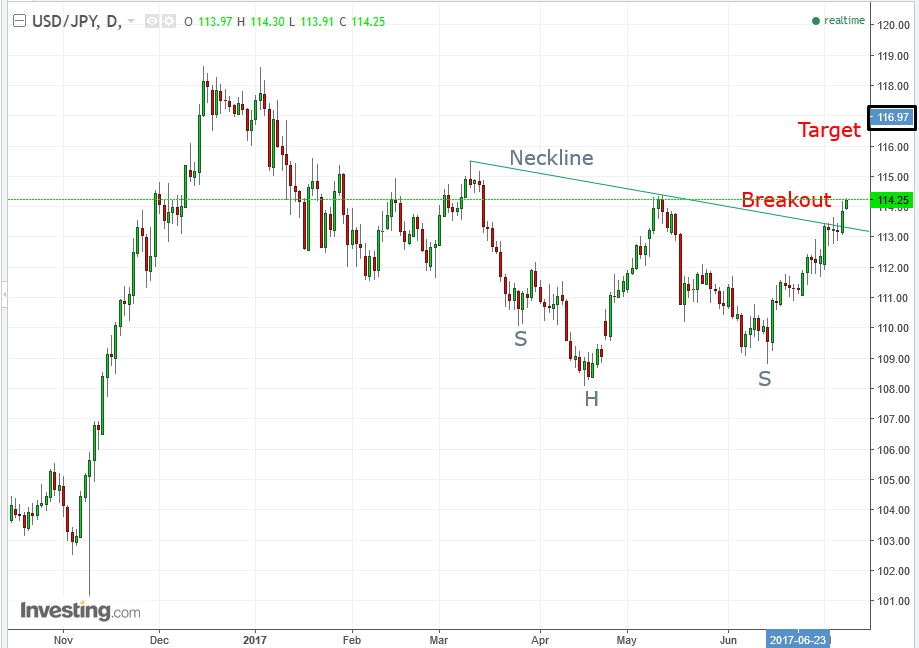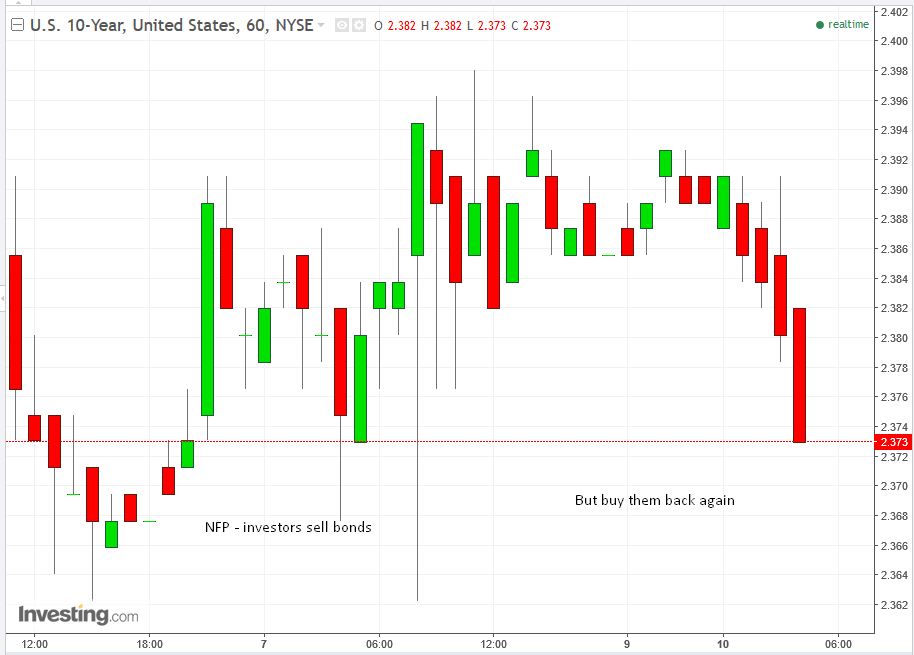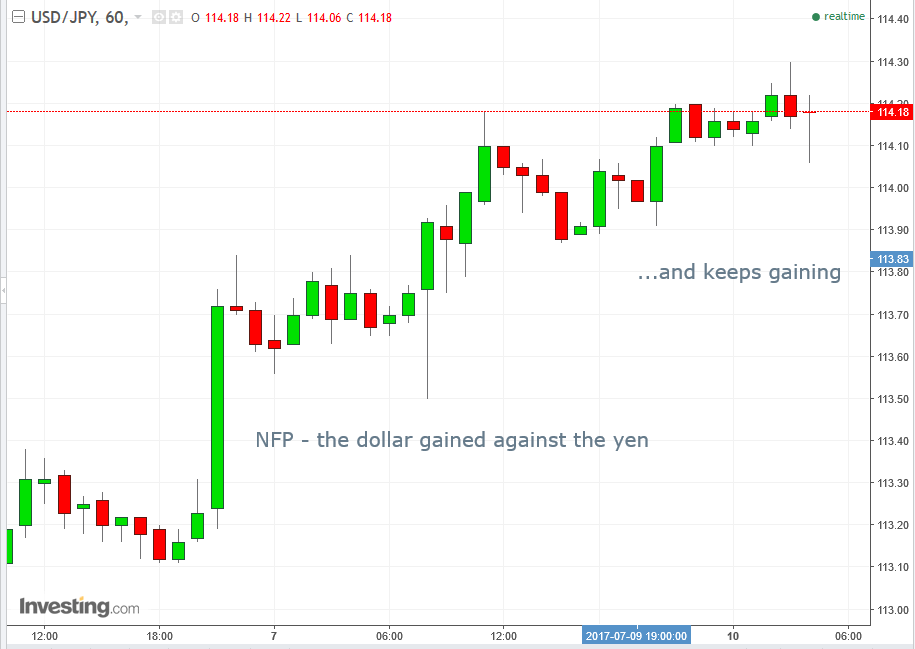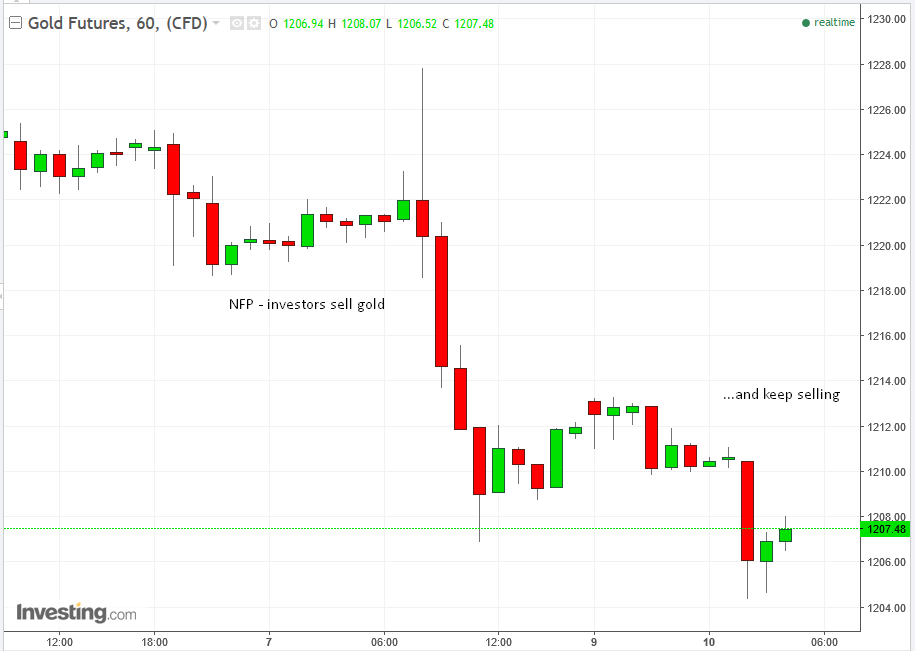by Pinchas Cohen
Key Events
- Yellen grilled by Congress this week, while Fedpseak pours down on investors
- Internal data diverges from headlines in world’s two biggest economies
- Positive US employment economic data along with an uneventful G-20 summit have put investors in a good mood, sending stocks higher
- Treasuries and dollar steady
- Yen remains at two month low while gold declines
Despite producer prices remaining steady for a second consecutive month in China, Asian markets opened positively, while European stocks and US index futures advanced. Despite the good data, Chinese stocks declined.
Global Affairs
With the exception of China, global markets opened positively in Asia. Chinese shares fell despite the country's producer price index holding steady for its second month at 5.5 percent. This is an impressive feat considering the country is undergoing a regulatory crackdown, and it shows promise of lowering debt levels—a major issue—for China’s state owned companies. At the same time, the country's PPI level is still well below its 7.8% peak in February, and has been in decline ever since. Even with new data suggesting that factory profits are on the rise, we’re not seeing a correlation with consumer prices which continue to remain tepid.
An interesting parallel to this situation may be the better-than-expected US nonfarm payrolls report which highlighted an increasing number of workers alongside stagnant wage growth. Bloomberg Chief Asia Economics Correspondent Enda Curran hypothesizes that this month a:
“...one off restocking of inventories by companies drove up the prices of commodities, which is probably what skewed the headline number. So, the overall theme remains PPI is probably headed downwards, decelerating for the rest of the year.”
European equities received a boost on the release of Germany’s current account balance, which is not only in surplus, but was also higher than expected.

Then yen extended losses to its lowest level since May 11, after Friday’s upside breakout of a H&S bottom reversal, which might symbolize the increasing on-risk momentum. This fall can be attributed to steadying levels in both Treasuries and the dollar, while gold and silver fell.
Alternatively, the yen may be falling irrespective of risk but rather, due to Bank of Japan Governor Haruhiko Kuroda’s reiteration that the central bank remains ready to adjust policy as needed following its intervention last week to cap rising yields. This is just one example of bulls and bears receiving the same information, but coming to vastly different conclusions. Another example: it has become cliché that equity investors shrug off political uncertainty, and instead choose to remain faithful during upswings on broadening global growth, while global stocks close at or near their all-time highs.
More data that can be interpreted either positively or negatively is that the US has created the most jobs in four months during the month of June, while wage increases were sluggish. Compare that to China’s consumer prices relative to PPI and consider whether this is a pattern or a coincidence.

The Dollar Index bounced 0.4 percent, but lost half of its gains and remains considerably subdued compared to its earlier prices.
Investors sold bonds, which pushed up yields, but have since returned to buy them and are pushing yields back down yet again.
Gold, on the other hand, has remained bearish both before and after, as investors resumed selling the yellow metal after the release of last week's NFP report.

The yen is the hardest to gauge. While investors sold off the yen with the surprising NFP headline and it has continued to decline against the dollar since, it’s impossible to know how much of this decline is a result of Japan’s intervention, rather than an expression of risk-on.
The question that must be on savvy investors’ minds is how does this dichotomy affect the Fed’s rate outlook, if at all. Presumably, investors who believe the economy is going through reflation have become further entrenched in their outlook based on the robust job creation numbers from the NFP report. On the other hand, data focused investors see the lack of inflation pressure by wages as more bad news in a string of pessimistic economic releases.
Up Ahead
Fedspeak Week
- FOMC member Williams speaks. He is a close ally of Janet Yellen, who said after the FOMC meeting that the case remains strong to continue to boost rates, as he sees inflation rising. He speaks tonight at 23:05 EDT
- FOMC member Governor Lael Brainard delivers the keynote address at the Conference of Normalizing Central Banks’ Balance Sheets in NYC (are we seeing a theme here?) on Tuesday, 12:30 EDT
- FOMC member Minneapolis Fed President Neel Kashkari will participate in an economic roundtable on Tuesday, 13:20 EDT
- FOMC member Kansas City Fed President Esther George presents her economic outlook in Denver, on Wednesday, 14:15 EDT
- Fed Chief Janet Yellen testifies before Congress. Investors are looking for guidance regarding the lowering of the balance sheet, a subject Congress members are sure to grill her about. Her testimony spans two days—Wednesday and Thursday, 10:00 EDT
- Chicago Fed President Charles Evans will discuss monetary policy at an economic summit in Idaho on Thursday, 11:30
- Dallas Fed President Robert Kaplan will participate in a Q&A in Mexico City on Friday, 9:30
Market Moves
Currencies

- The yen fell 0.3 percent to 114.23 per dollar as of 4:05 p.m. in Tokyo, it is at its weakest since May 11.
- The Dollar Index attempted a mild advance, but was pushed back and is flat after yesterday’s close at 96.00.
- The Canadian dollar fell 0.1 percent after its 0.8 percent jump on Friday.
- The pound rose 0.1 percent.
- The euro remained little changed.
- The Mexican peso surged 0.9 percent to 17.92 versus the greenback, its strongest level this month. The currency also rose 0.9 percent Friday.
- The Korean won led gains in Asia, up 0.4 percent to 1,149.40 per dollar.
Stocks
- The Euro Stoxx 50 index gained 0.4 percent.
- S&P 500 Futures were up 0.2 percent.
- The MSCI Asia Pacific Index rose 0.3 percent after hitting a five-week low Friday.
- Japan’s TOPIX added 0.5 percent.
- Australia’s S&P/ASX 200 Index gained 0.4 percent.
- Hong Kong’s Hang Seng Index rose 0.7 percent.
- China's Shanghai Composite declined.
Bonds
- The yield on 10-year Treasury was steady at 2.39 percent after rising 24 basis points in the past two weeks.
Commodities

- Gold dropped 0.5 percent to $1,205.97 an ounce.
-
- WTI crude strengthened 0.2 percent to $44.29 a barrel following its 2.8 percent slide Friday.
- Silver fell 1.5 percent.
